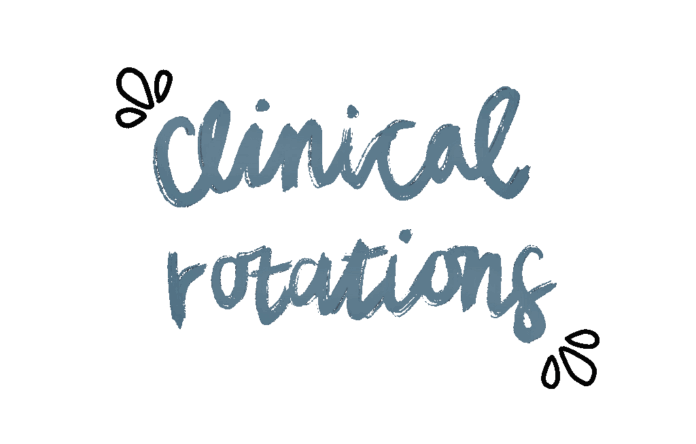Clinical rotations play a vital role in the education and development of healthcare professionals. However, managing allied health and nursing program rotations efficiently while ensuring compliance with regulations and standards can be challenging for educators and rotation managers.
This article explores effective strategies to track rotation information and create more streamlined clinical rotations. You’ll also learn how to leverage technology tools to schedule clinical rotations efficiently and ensure compliance.
Effective strategies for better clinical rotations include:
Clear Communication and Expectations
To lay the foundation for successful clinical rotations, clear communication is essential. Educators and rotation managers should establish open lines of communication with students, preceptors, and staff.
By setting clear expectations regarding behavior, responsibilities, and compliance standards, students can better understand their roles and obligations. Additionally, providing comprehensive orientation and onboarding processes will help familiarize students with the rotation environment and ensure a smooth start.
Robust Rotation Planning
Efficient rotation planning requires collaboration between educators, rotation managers, and students. By considering individual learning goals, preferences, and special requirements, rotations can be tailored to maximize educational value.
Optimizing the allocation of resources, preceptors, and facilities is crucial to ensure a balanced workload and adequate supervision. This collaborative approach fosters a positive learning environment while maintaining compliance standards.
Comprehensive Compliance Management
Compliance is a critical aspect of clinical rotations. Educators and rotation managers should familiarize themselves with relevant regulations and compliance standards. Implementing systems to track rotation information, including documentation, certifications, and licenses, is crucial for compliance management.
Regular audits and reviews help ensure adherence to compliance requirements and provide an opportunity to address any issues promptly. By prioritizing compliance, educators and rotation managers can create a safe and secure environment for students.
Supportive Learning Environment
A supportive learning environment is vital for the success of clinical rotations. Educators and rotation managers should foster a culture of respect, inclusivity, and collaboration. Providing mentorship and support throughout the rotation period helps students navigate challenges and optimize their learning experience. Monitoring student well-being is equally important to address burnout or stress, promoting a positive and supportive environment.
Utilizing Technology and Automation
In today’s digital age, technology plays a significant role in managing clinical rotations efficiently. Rotation management software can streamline scheduling, track rotation information, and facilitate compliance documentation.
By leveraging online platforms, educators and rotation managers can enhance communication, resource sharing, and evaluation processes. Furthermore, simulation and virtual learning tools can provide additional educational opportunities, supplementing traditional clinical experiences.
Continuous Evaluation and Improvement
Continuous evaluation is key to improving the efficiency and compliance of clinical rotations. Gathering feedback from students, preceptors, and staff allows educators and rotation managers to assess the effectiveness of the rotations.
Analyzing data and metrics helps identify areas for improvement and make data-driven decisions. It is crucial to adapt and refine rotation processes based on feedback and evaluation results to optimize efficiency and enhance the learning experience.
Benefits of Utilizing Technology and Automation
Incorporating technology into rotation management offers numerous benefits, such as enhancing efficiency and compliance in clinical rotations. Rotation management software simplifies scheduling and rotation tracking while considering student preferences, objectives, and compliance.
These systems automate tasks, which in turn reduces errors, while also enabling real-time access to rotation details and documentation. Some other benefits of rotation management software include:
- Streamlined Scheduling: Automates rotation schedules, saving time and minimizing conflicts.
- Compliance Tracking: Manages certifications and licenses, ensuring regulatory compliance.
- Efficient Communication: Facilitates seamless collaboration among educators, preceptors, and students.
- Documentation Management: Organizes and tracks rotation-related documents for easy access.
- Data Analysis: Generates reports for performance analysis and informed decision-making.
- Improved Efficiency: Automates administrative tasks, reducing errors and freeing up time.
- Enhanced Compliance: Maintains up-to-date documentation, ensuring readiness for audits.
- Accessibility and Real-time Updates: Allows remote access and instant information updates.
- Student Engagement and Feedback: Provides platforms for evaluations and continuous improvement.
- Overall Optimization: Enhances efficiency, compliance, and the learning experience for all.
Conclusion
Efficient and compliant clinical rotations are essential for the education and development of future allied healthcare professionals. By implementing effective strategies such as clear communication, and utilizing technology for scheduling, educators and rotation managers can optimize the efficiency and compliance of clinical rotations.
By prioritizing these strategies, it’ll be easier to schedule clinical rotations, ensure compliance, and create a rich and rewarding experience for students, preparing them for successful careers in healthcare.

